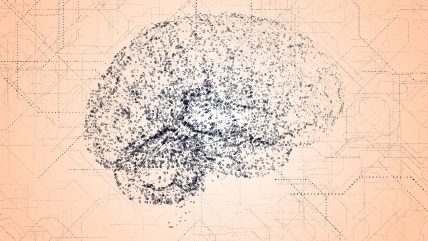
It’s time to get serious about AI’s mounting energy demands. Bain & Company forecasts that $500bn must be spent annually on new data centres to match AI’s computational needs. Initiatives like The Stargate Project – which also calls for a similar amount of money to be invested in AI infrastructure – speak to motivated efforts to build those data centres. But grid officials are already warning of AI-driven demand outstripping supply.
If we continue to follow the trajectory mapped out by OpenAI and Bain, we are at the beginning of an AI “energy crunch.” Trying to avoid that scenario by rapidly scaling energy supply overlooks how unsustainable demand is baked into the unit economics of LLMs. Just look at Goldman Sachs’ estimates for OpenAI’s operating profit loss.
A paradigm shift is needed for AI to get on a sustainable course. Alternative LLM architectures are here to make that shift.
The spiralling demands of reasoning
To understand how we got here, the rising energy demands of LLMs must be put into context. Where earlier iterations of LLMs generated a few hundred tokens per response to user queries, modern reasoning models generate thousands of so-called ‘thinking tokens’ to articulate the steps of ‘chain-of-thought’ reasoning.
The transformer was the outcome of AI companies responding to pressure to improve LLMs without replacing their core architecture. Instead of addressing how models think, the focus was on feeding them more data with the belief that scale alone would make models smarter. ‘Chain of thought’ prompting, which sees models burn through more tokens to solve complex problems step by step, was introduced to address clear gaps in advanced reasoning capabilities.
It’s hardly a secret that this approach has resulted in outsized energy requirements for AI infrastructure. However, developers are increasingly concerned that this method has reached its computational limit. It took OpenAI over two years to train its GPT-5 model using transformers, and it was still received underwhelmingly at launch. Given all these factors, it’s no wonder that a growing share of the AI community is looking for an alternative.
Bridging the gap to brain-like reasoning
We need look no further than our own brains for inspiration. Natural intelligence gives us inspiring examples of how to develop advanced cognitive functions with minimal energy demands. Indeed, the brain’s basic principles for information processing are being replicated by cutting-edge AI companies offering a new architecture for LLMs.
The brain consists of 100bn neurons that act as computational units connected by hundreds of trillions of synapses to communicate and transmit information throughout the nervous system. Each neuron’s number of synapse connections varies. Some neurons are sparsely connected, while others act as hubs with many connections. This structure stays the same as the brain grows and changes, which makes it a scale-free network. To power these billions of neurons, the brain uses approximately 20 watts of power, which is equivalent to a dim lightbulb and dwarfed by the watts required of today’s LLMs for training and inference.
2025 has seen the launch of post-transformer architectures that can reproduce memory and higher-order cognitive function for LLMs by replicating how neurons and synapses function in the brain. Rather than drawing on static, massive training weights to answer prompts and ‘reason’, a user prompt triggers internal mechanisms for reasoning where relevant artificial neurons are selectively activated, relevant to concepts and steps in reasoning.
This borrows from the neuroscience concept of Hebbian learning (‘Neurons that fire together, wire together.’) and applies it to the inner workings of LLMs. Models built on this architecture have shown themselves to be higher-performing (given the capability to build long-term memory) and far more sustainable compared to transformer-based models. ‘Reasoning’ in this context stops serving as a token-burning stream of consciousness, and models no longer require hundreds of billions of tokens in training data because they have the internal mechanisms to learn far more from an individual token and on the fly. Importantly, emerging research already demonstrates how this shift is possible using the massively scalable hardware which enabled the current explosion of AI.
A real paradigm shift in AI’s future
Replacing the transformer with a brain-like architecture is a big leap forward for LLMs. Current momentum is seen in the AI community training models with open-source alternative architectures and reporting outstanding results. The steam will continue to pick up as we head into the new year and get on the radar of enterprises.
This is how the AI energy crunch is averted. It’s also how the promise of LLMs gets back on track towards the unrealised massive potential that lies ahead.
Zuzanna Stamirowska is the CEO and a co-founder of Pathway






